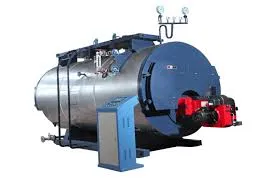
Aug . 12, 2024 21:06 Back to list
Understanding the Wiring Diagram for Low Water Cutoff in Steam Boiler Systems
Understanding the Wiring Diagram for Steam Boiler Low Water Cutoff
Steam boilers are crucial components in many industrial and commercial applications, providing necessary steam for heating, power generation, and various processes. One critical safety feature in steam boilers is the low water cutoff (LWCO) device. This article aims to explain the importance of the LWCO, its wiring diagram, and how it functions in the overall system.
What is a Low Water Cutoff?
The low water cutoff is a safety device designed to prevent a steam boiler from operating when the water level falls below a safe threshold. Lack of water can cause overheating, leading to potential boiler damage or even catastrophic failure, such as explosions. Therefore, the LWCO monitors the water level inside the boiler and ensures that it remains within specified limits.
Importance of Wiring Diagrams
Wiring diagrams are essential for understanding how various components interconnect within a boiler system. These diagrams provide a visual representation of the electrical connections and pathways that ensure the proper functioning of the low water cutoff and other motor controls. They also serve as valuable reference materials for technicians during installation, troubleshooting, and maintenance activities.
Understanding the Wiring Diagram
A typical wiring diagram for a steam boiler's low water cutoff includes several key components
1. Low Water Cutoff Sensor This sensor detects the water level in the boiler. It can be a mechanical float switch or an electronically controlled probe. The diagram will show how this sensor is wired to the control relay or boiler’s control panel.
steam boiler low water cutoff wiring diagram

2. Power Supply The diagram will indicate the source of power for the LWCO. The power supply may be 120V or 240V AC, depending on the boiler system design. It's crucial to identify and ensure that the correct voltage is supplied to avoid damaging the LWCO or other electronic components.
3. Control Relay The control relay acts as the intermediary between the LWCO sensor and the boiler control system. The wiring diagram will illustrate how the sensor connects to the relay and how the relay interacts with the boiler's operating controls.
4. Alarm System Many modern steam boiler systems are equipped with an alarm that activates if the LWCO trips. The wiring diagram should show how this alarm is integrated and where it connects to the main control panel.
5. Testing and Reset Circuits Some diagrams include circuits for testing the LWCO and resetting it after a trip. These features enhance operational safety, allowing operators to check the integrity of the sensor without compromising the boiler's functionality.
Practical Considerations
During installation or maintenance, it's crucial to use the correct wiring practices to ensure safety and functionality. This involves using appropriate wire gauges, securing all connections properly, and ensuring that all components are rated for the intended electrical load.
Furthermore, operators should regularly test the LWCO to ensure it functions correctly. This can typically be done by simulating low water conditions and observing whether the boiler shuts down appropriately.
Conclusion
The low water cutoff is an essential safety feature in steam boiler systems, preventing potential disasters caused by low water levels. Understanding its wiring diagram helps technicians ensure that the system operates correctly and safely. Regular maintenance and testing of this critical component are necessary to maintain boiler integrity and operational efficiency. In summary, a detailed grasp of the wiring configuration for the low water cutoff enhances both safety and performance in steam boiler systems.
-
High-Efficiency Commercial Oil Fired Steam Boiler for Industry
NewsJul.30,2025
-
High-Efficiency Biomass Fired Thermal Oil Boiler Solutions
NewsJul.30,2025
-
High Efficiency Gas Fired Thermal Oil Boiler for Industrial Heating
NewsJul.29,2025
-
High-Efficiency Gas Fired Hot Water Boiler for Sale – Reliable & Affordable
NewsJul.29,2025
-
High Efficiency Biomass Fired Hot Water Boiler for Industrial and Commercial Use
NewsJul.29,2025
-
High-Efficiency Biomass Fired Hot Water Boiler for Industrial Use
NewsJul.28,2025
Related PRODUCTS






















